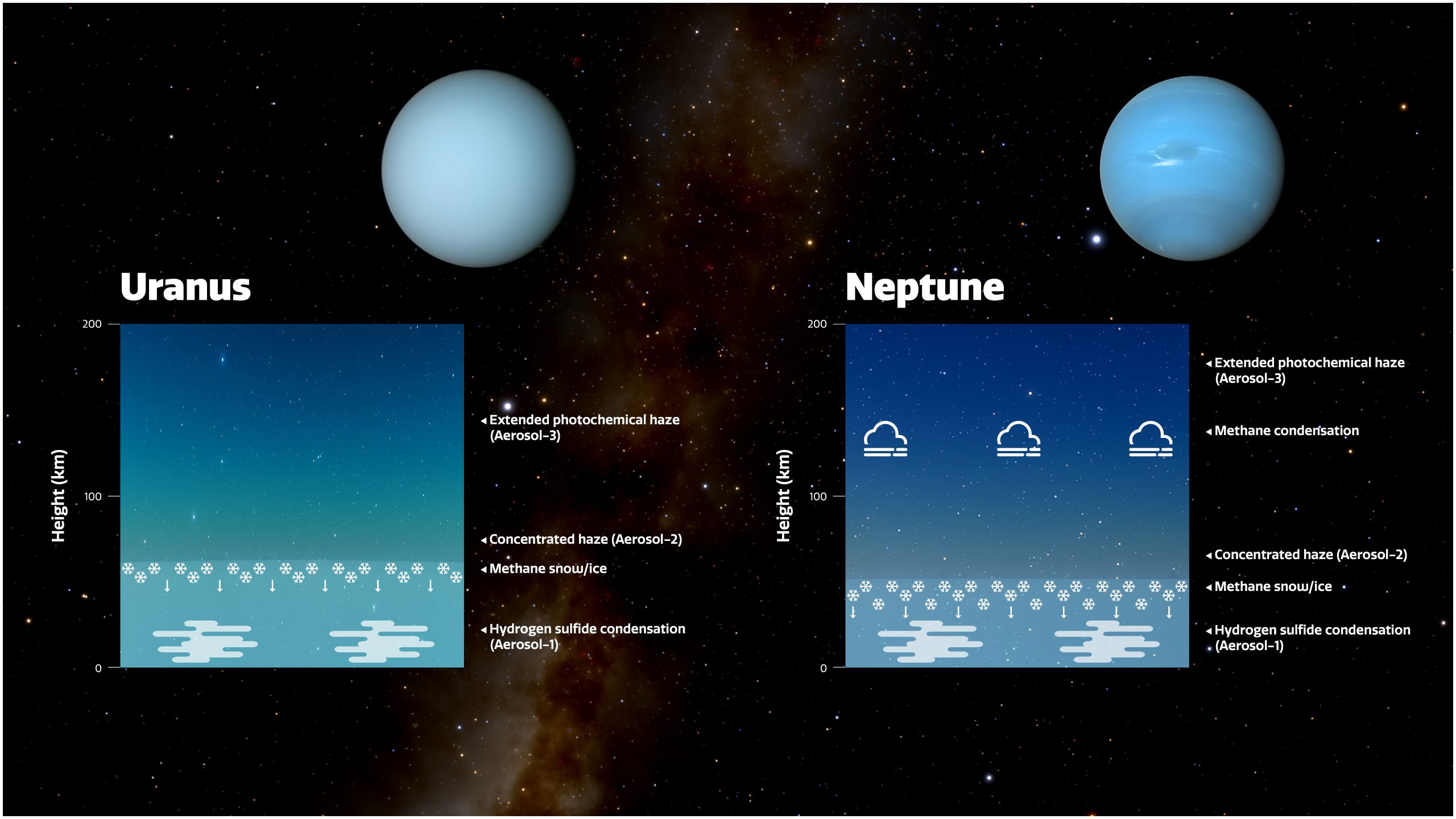Why Uranus and Neptune are colored differently
Actually, Uranus and Neptune, the two outer planets of the solar system, are quite similar. Known as the “ice giants,” the planets have similar masses (14.5 to 17 Earth masses), sizes (51,000 to 49,000 km at the equator), and atmospheric compositions (hydrogen at around 80%, helium around 15%, methane about 2%) – and yet they differ significantly in appearance. In the visible wavelength range, Neptune has a rich, deep blue hue, while Uranus has a much paler cyan hue. Astronomers have now found and published an explanation for the different colors of the two planets.
The researchers refer to layers of concentrated haze, which are produced by the solar radiation and reflect the irradiated light, thus brighten the planet optically. They are apparently present on both planets. On Uranus, however, the middle layer is about twice as thick as on Neptune. Therefore, it brightens the appearance of Uranus more. If there were no haze in the atmospheres of Neptune and Uranus, both would appear almost equally blue because the blue light is scattered primarily by the methane in their atmospheres.
This conclusion comes from a model developed by an international team led by Patrick Irwin, professor of planetary physics at Oxford University, to describe the aerosol layers in the atmospheres of Neptune and Uranus. It consists of multiple atmospheric layers and agrees with observations of both planets across a wide range of wavelengths. The new model also includes haze particles in deeper layers previously thought to contain only clouds of methane and hydrogen sulfide ice.
The higher light transmission of Neptune’s middle aerosol layer also explains why dark spots are easier to observe in its atmosphere than in that of Uranus. “This is the first model to simultaneously map observations of reflected sunlight from ultraviolet to near-infrared wavelengths,” explains Irwin, the study’s lead author. “It is also the first model to explain the difference in visible color between Uranus and Neptune.”
The team’s model consists of three layers of aerosols at different altitudes. The most important layer that affects the colors is the middle layer, a layer of haze particles (called the aerosol-2 layer in the study) that is thicker on Uranus than on Neptune. The team suspects that on both planets, methane ice condenses on the particles in this layer, pulling the haze particles deeper into the atmosphere in the form of a methane snow shower. Because Neptune’s atmosphere is more active and turbulent than Uranus’, the team hypothesizes that Neptune’s atmosphere is more efficient at stirring up the methane particles into the haze layer and producing this snow. This removes more of the haze, and Neptune’s haze layer is thinner than Uranus’, causing Neptune’s blue color to appear stronger.
